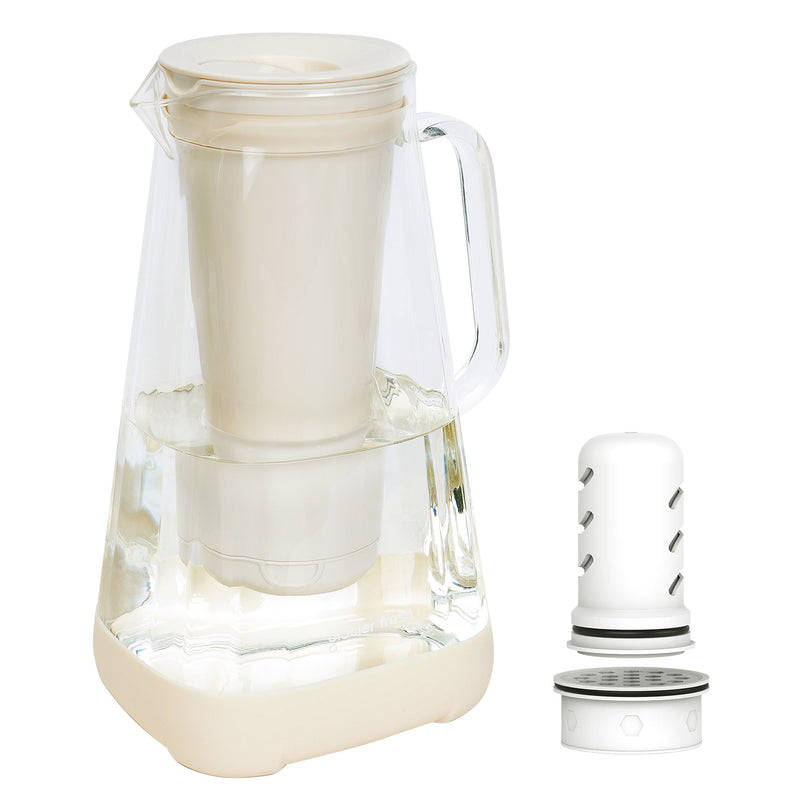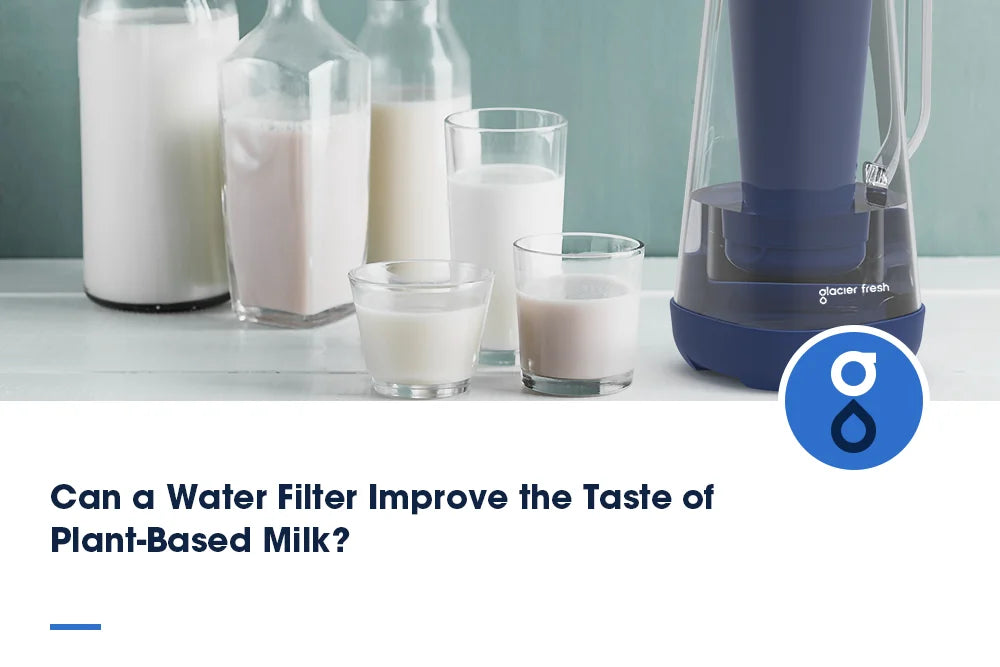Table of Contents:
Verstopfte oder verschmutzte Vorfilter
Volle oder gesättigte RO-Membran
Niedriger Wasserdruck
Verstopfter oder geknickter Schlauch
Defekter Durchflussbegrenzer
Probleme mit der Tankblase
Abschluss
Umkehrosmose-Wasserfiltersysteme (RO) werden häufig eingesetzt, um Haushalte und Unternehmen mit sauberem, gereinigtem Trinkwasser zu versorgen. Diese Systeme entfernen effektiv Verunreinigungen wie Chlor, Blei und Sedimente und liefern klares, sauberes Wasser. Ein Problem, mit dem viele Benutzer jedoch konfrontiert sind, ist der langsame Wasserfluss. Wenn Ihr RO-System nicht so schnell Wasser produziert, wie es sollte, kann das frustrierend sein – insbesondere, wenn Sie schnell sauberes Wasser benötigen.
Ein langsamer Wasserfluss kann verschiedene Ursachen haben. In diesem Blogbeitrag erläutern wir sechs häufige Gründe für einen langsamen Wasserfluss in Ihrer Umkehrosmoseanlage und geben praktische Tipps zur Behebung.
Verstopfte oder verschmutzte Vorfilter

Ursachen: Die Vorfilter in einem Umkehrosmosesystem, typischerweise ein Sedimentfilter und ein Kohlefilter, entfernen größere Partikel wie Schmutz, Sand, Chlor und organische Stoffe, bevor das Wasser die Umkehrosmosemembran passiert. Mit der Zeit können diese Filter durch Ablagerungen verstopfen, was ihre Wirksamkeit verringert und den Wasserfluss verlangsamt.
Anzeichen für verstopfte Filter:
- Deutlich langsamerer Wasserfluss.
- Längere Filtrationszeiten.
- Niedrigerer Wasserdruck aus Ihrem Wasserhahn.
So beheben Sie das Problem:
- Überprüfen und ersetzen Sie Ihre Filter regelmäßig. Vorfilter sollten je nach Wasserqualität in Ihrer Region in der Regel alle 6 bis 12 Monate ausgetauscht werden. Bei manchen Systemen kann ein häufigerer Austausch erforderlich sein, wenn Ihr Wasser stark sedimentbelastet ist.
- Verwenden Sie hochwertige Filter. Hochwertigere Filter halten möglicherweise länger und bieten einen besseren Durchfluss.
- Um die Filter auszutauschen, schalten Sie die Wasserzufuhr des Systems ab, entfernen Sie die alten Filter und ersetzen Sie sie durch neue. Befolgen Sie die Anweisungen des Herstellers zur ordnungsgemäßen Installation.
Volle oder gesättigte RO-Membran
Warum das passiert: Die Umkehrosmosemembran ist das Herzstück des Filtersystems und für die Entfernung gelöster Schadstoffe wie Blei, Pestizide und Schwermetalle verantwortlich . Mit der Zeit kann diese Membran mit Verunreinigungen gesättigt werden, was den Filterprozess verlangsamt und den Wasserdurchfluss verringert.
Anzeichen einer vollen Membran:
- Deutlich reduzierter Wasserdruck.
- Das Filtern und Produzieren von Wasser dauert viel länger.
- Das System produziert weniger gereinigtes Wasser.
So beheben Sie das Problem:
- Überprüfen Sie die RO-Membran. Je nach Wasserverbrauch und -qualität müssen die meisten Membranen alle 2 bis 3 Jahre ausgetauscht werden .
- Reinigen Sie die Membran. Bei einigen RO-Systemen können Sie die Membran reinigen, um ihre Lebensdauer zu verlängern. Verwenden Sie vom Hersteller zugelassene Reinigungslösungen, um Ablagerungen zu entfernen.
- Ersetzen Sie die Membran. Wenn die Membran beschädigt oder zu stark mit Verunreinigungen gesättigt ist, ist es am besten, sie durch eine neue zu ersetzen, um die optimale Leistung wiederherzustellen.
Niedriger Wasserdruck

Warum es passiert: Umkehrosmoseanlagen benötigen einen Mindestwasserdruck, um ordnungsgemäß zu funktionieren. Ist der Eingangswasserdruck zu niedrig, kann das System das Wasser möglicherweise nicht schnell oder effizient filtern, was zu einer langsamen Durchflussrate führt.
Anzeichen für niedrigen Wasserdruck:
- Extrem langsamer Wasserfluss während der Filtration oder Abgabe.
- Schwacher oder ungleichmäßiger Wasserdruck.
- Die Wasserproduktion scheint langsamer als gewöhnlich zu sein.
So beheben Sie das Problem:
- Überprüfen Sie den Wasserdruck. Verwenden Sie ein Wasserdruckmessgerät, um den Eingangsdruck des Wassers in Ihr RO-System zu messen. Liegt er unter dem optimalen Bereich von 40-60 psi , kann dies zu einem langsamen Wasserfluss führen.
- Installieren Sie eine Druckerhöhungspumpe. Wenn Ihr Wasserdruck dauerhaft niedrig ist, müssen Sie möglicherweise eine Druckerhöhungspumpe installieren. Eine Druckerhöhungspumpe erhöht den Wasserdruck und stellt sicher, dass das RO-System effektiv funktioniert.
- Überwachen Sie regelmäßig Ihren Wasserdruck, um sicherzustellen, dass er für eine optimale Leistung im erforderlichen Bereich bleibt.
Verstopfter oder geknickter Schlauch
Ursache: Das RO-System nutzt eine Reihe von Rohren und Schläuchen, um das Wasser während des gesamten Filterprozesses zu transportieren. Wenn diese Rohre verstopft oder geknickt sind, kann der Wasserfluss eingeschränkt werden, was zu einer langsameren Wasserproduktion führt.
Anzeichen für verstopfte oder geknickte Schläuche:
- Langsame Wasserproduktion oder -abgabe.
- Hörbare Geräusche aus dem System weisen darauf hin, dass das Wasser nur schwer durchfließen kann.
- Niedriger oder ungleichmäßiger Wasserdruck.
So beheben Sie das Problem:
- Überprüfen Sie alle Schläuche. Überprüfen Sie alle an Ihr RO-System angeschlossenen Rohre und Schläuche auf sichtbare Knicke, Biegungen oder Verstopfungen.
- Beseitigen Sie Verstopfungen. Entfernen Sie sichtbare Verstopfungen vorsichtig. Bei inneren Verstopfungen kann eine Demontage des Schlauchs erforderlich sein.
- Knicke beseitigen. Stellen Sie sicher, dass die Schläuche nicht geknickt oder verdreht sind, sodass der Wasserfluss nicht beeinträchtigt wird. Verlegen Sie geknickte Schläuche gegebenenfalls neu.
- Überprüfen Sie die Anschlüsse. Stellen Sie sicher, dass alle Schlauchverbindungen fest und sicher sind, um Lecks zu vermeiden und einen reibungslosen Wasserfluss zu gewährleisten.
Defekter Durchflussbegrenzer
Ursache: Der Durchflussbegrenzer in einem RO-System reguliert den Wasserfluss, um den richtigen Druck aufrechtzuerhalten. Eine Fehlfunktion des Durchflussbegrenzers kann dazu führen, dass der Wasserfluss übermäßig langsam oder unregelmäßig wird.
Anzeichen für einen defekten Durchflussbegrenzer:
- Extrem langsamer Wasserfluss.
- Der Wasserdruck ist ungleichmäßig.
- Deutlicher Rückgang der Wasserproduktion.
So beheben Sie das Problem:
- Suchen Sie den Durchflussbegrenzer. Der Durchflussbegrenzer befindet sich normalerweise in der Abflussleitung des RO-Systems. Überprüfen Sie ihn auf sichtbare Anzeichen von Beschädigung oder Verstopfung.
- Reinigen Sie den Durchflussbegrenzer. Wenn der Durchflussbegrenzer verstopft ist, können Sie versuchen, ihn durch vorsichtiges Abspülen mit warmem Wasser zu reinigen. Vermeiden Sie die Verwendung aggressiver Chemikalien.
- Ersetzen Sie den Begrenzer. Wenn der Begrenzer Risse oder Beschädigungen aufweist, müssen Sie ihn möglicherweise ersetzen. Stellen Sie sicher, dass Sie die richtige Größe und das richtige Modell für Ihr RO-System wählen, um einen ordnungsgemäßen Durchfluss zu gewährleisten.
Probleme mit der Tankblase
Ursache: Der Speichertank eines Umkehrosmosesystems enthält eine Blase, die das Wasser unter Druck setzt und so die Abgabe erleichtert. Wenn die Blase im Tank vollgesogen oder beschädigt wird, kann dies den Wasserfluss einschränken und das System beim Befüllen und Abgeben des Wassers behindern.
Anzeichen für Probleme mit der Tankblase:
- Der Vorratstank füllt sich nicht richtig.
- Extrem langsame Wasserausgabe.
- Der Wasserdruck sinkt während des Gebrauchs erheblich.
So beheben Sie das Problem:
- Überprüfen Sie den Tankdruck. Verwenden Sie ein Luftdruckmessgerät, um den Druck in Ihrem RO-Tank zu überprüfen. Im leeren Zustand sollte der Tank einen Luftdruck von etwa 7-8 psi haben. Wenn der Druck zu niedrig ist, pumpen Sie mit einer Fahrradpumpe Luft nach.
- Ersetzen Sie den Vorratstank. Wenn die Blase im Tank beschädigt oder mit Wasser vollgesogen ist, muss der gesamte Tank ersetzt werden.
- Überprüfen Sie regelmäßig den Tankdruck, um eine ordnungsgemäße Funktion sicherzustellen.
Abschluss
Ein langsamer Wasserfluss in Ihrer Umkehrosmoseanlage muss kein dauerhaftes Problem sein. Indem Sie die häufigsten Ursachen für einen reduzierten Durchfluss – wie verstopfte Filter, eine volle RO-Membran, niedrigen Wasserdruck, verstopfte Schläuche, defekte Durchflussbegrenzer und Probleme mit der Tankblase – identifizieren und beheben, können Sie die Leistung Ihrer Anlage wiederherstellen und sauberes, gereinigtes Wasser ohne Wartezeit genießen.
Rechtzeitiger Austausch und regelmäßige Wartung sind entscheidend für den optimalen Betrieb Ihres RO-Systems . Wenn der Wasserfluss trotz Fehlerbehebung weiterhin langsam ist, sollten Sie einen Fachmann konsultieren, um sicherzustellen, dass Ihr System ordnungsgemäß funktioniert.
Wenn Sie diese Schritte befolgen, können Sie sicherstellen, dass Ihr Umkehrosmosesystem über Jahre hinweg frisches, gereinigtes Wasser mit der richtigen Geschwindigkeit liefert! Folgen Sie Glacier Fresh , um weitere Wasserfilterlösungen zu finden.
















